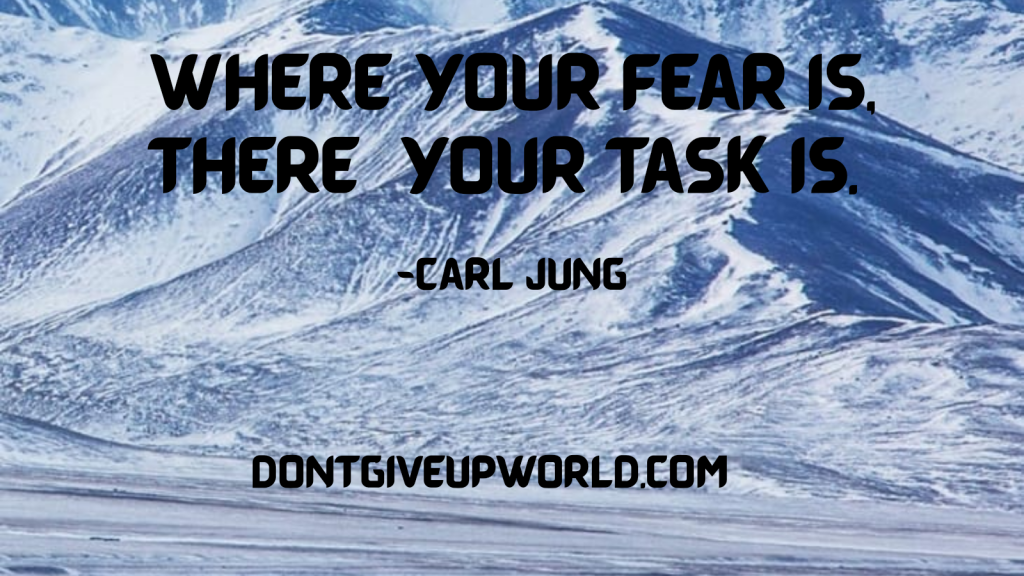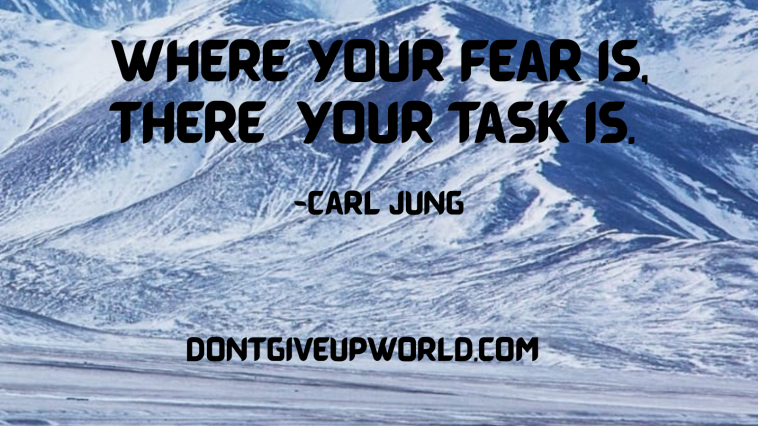
Where you fear is, there your task is.
Carl Jung
“Where your fear is, there your task is.” This profound statement by Carl Jung challenges us to confront our fears head-on. It suggests that our greatest growth lies in the areas where we experience the most fear. Embracing this philosophy can lead to significant personal and professional development. Quote on fear and task by Carl Jung
The Nature of Fear:
Fear is a natural human emotion that serves as a protective mechanism. However, it can also be a barrier to progress. Jung’s quote implies that by facing our fears, we uncover opportunities for growth. Instead of avoiding what scares us, we should see it as a signal of where we need to focus our efforts.
Transition: Moreover, confronting fear builds resilience.
Building Resilience Through Fear: Resilience is the ability to bounce back from adversity. By tackling our fears, we develop this crucial trait. Each time we face a fear, we strengthen our ability to handle future challenges. This process builds confidence and fortitude, essential qualities for personal and professional success.
Transition: Furthermore, facing fears can lead to self-discovery.
Path to Self-Discovery: Jung believed that confronting fears reveals deeper truths about ourselves. It can uncover hidden strengths and passions. By engaging with our fears, we embark on a journey of self-discovery. This journey can lead to a more authentic and fulfilling life.
Transition: Additionally, overcoming fear enhances creativity.
Enhancing Creativity: Fear often stifles creativity. When we confront it, we liberate our creative potential. Many great innovations and artistic works have emerged from facing fears and uncertainties. Embracing fear can thus open new avenues for creative expression and problem-solving.
Transition: However, this process requires courage.
Cultivating Courage: Courage is not the absence of fear, but the willingness to act despite it. By continually challenging our fears, we cultivate courage. This courage empowers us to take risks and pursue our dreams. It transforms fear from a hindrance into a motivator for action.
Conclusion: Carl Jung’s quote, “Where your fear is, there your task is,” invites us to view fear as a guide. It suggests that our greatest tasks and opportunities for growth lie where we are most afraid. By confronting our fears, we build resilience, discover our true selves, enhance creativity, and cultivate courage. Therefore, let us embrace our fears and undertake the tasks they reveal. This approach will lead to profound personal and professional transformation.
For More Info Click Here
More Such Article Click Here





GIPHY App Key not set. Please check settings